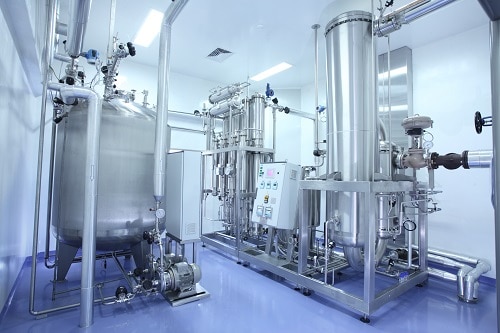Peristaltic pumps have many uses in industry, but their most common use Is for high purity applications. The reason these pumps are preferred for high purity applications is because the material being pumped is confined to the tube. The pump never touches the material and the material never touches the pump. This keeps the pump from contaminating the material and it also keeps the material from contaminating the pump.
Peristaltic pumps are used most often for applications involving metering, dispensing and precise general transfer. The Verderflex range of Peristaltic pumps can work with flows as low as 0.09 mL/min or as high as 1500 litres per minute. They can generate pressure as high as 16 bar.
Because these pumps offer the rare combination of Purity and precision, they are the pumps of choice in many applications that include the dosing or transfer of chemicals and additives for semiconductor, pharmaceutical and food applications.
Because the materials are confined to the tubing, peristaltic pumps only require minimal maintenance and provide an extremely high ratio of service time to downtime.

Peristaltic Pumps: How They Work
Peristaltic pumps Are so named because their action mimics the action in which food and liquids are transferred through humans and animals, called peristalsis. perhaps the best demonstration of peristalsis is watching a snake swallow.
Since pumps don’t have muscles, it is necessary to use rollers to mimic the opening and closing of the tube on a peristaltic pump and move materials forward. The rollers move around on a rotor and close the tube sequentially. This creates a vacuum at the entrance while moving the materials in the pump toward the outlet.
The size of the tube, the amount of materials being transported and the speed of the rollers determine the flow rates of a peristaltic pump. This allows us to precisely control the speed and the amount of materials moved by controlling the size of the tubing and the rate of the rollers.
Peristaltic pumps are available in numerous configurations from the most simple that only pump at one rate to those that are adjusted by computer to control exact amounts of materials being pumped such as in metering applications.
Advantages of Peristaltic Pumps
We have already mentioned the main advantage of peristaltic pumps: they offer the ultimate in Purity because the media being pumped only touches the tube. Another advantage is that they are available in so many different configurations. This allows them to pump a wide variety of fluids.
Peristaltic pumps are classified as self-priming. This means they can transfer fluids into the pump from a dry start. It can be incredibly inconvenient to try and prime a pump while trying not to contaminate the media being transferred. Due to the design and configuration of peristaltic pumps, they are extremely gentle. This allows peristaltic pumps to transfer media that are too fragile for other designs.
Due to the variable speed options, peristaltic pumps are superior for dosing applications and precise measurements. Since the fluid does not contact the pump, the pump requires no cleaning of seals, valves or diaphragms. The only part that needs to be cleaned and replaced on a regular basis is the tubing. This results in reduced maintenance times and reduced downtime.
Because a peristaltic pump is non siphoning, no media are transferred back into the system. This is another reason why peristaltic pumps are the pump of choice for metering.
Applications for Peristaltic Pumps
We would like to give you a short summary of applications for a peristaltic pump. This is in no way complete because there are so many different applications for peristaltic pumps.
Peristaltic pumps are used for pizza sauce dispensing, juice production and the injection of vitamins A & D. They are also used to circulate cell suspension in fermentation. They are used for the aspiration of tissue culture media and harvesting cell media. They are also used to supply nutrients for cultures and for cosmetic dispensing.
Peristaltic pumps are to dispense spray coatings, sterilised media, highly acidic or highly base media, fuels and lubricants. They are used in circuit board manufacturing and in adhesives for cement. Basically, if it needs to be pure and it needs to be precise, a peristaltic pump is probably the right choice.
To learn more about these pumps, call Pump Solutions Australasia today: 08 9408 1544.
